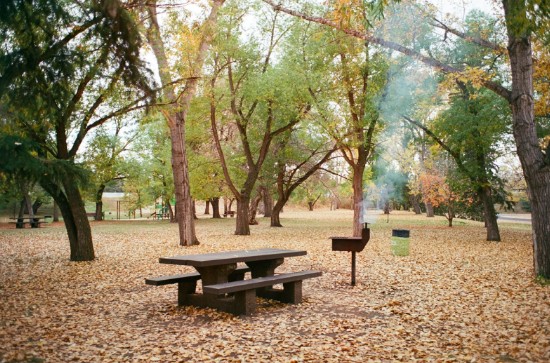
Cover image by Junwen Shen on Unsplash.
Leaf peeping season is upon us, and these fall camping destinations in the U.S. will put you right in the middle of all the autumn hues.
We may look forward to them all year, but peak fall colors don’t last long. In fact, leaf peepers only really have a couple weeks each year where the leaves are their most vibrant. Those crisp mornings and quieter trails only last from mid-late September through early December, if that.
As of 2024, Camper Champ reports that fall camping is up 21% (combined with spring camping, a.k.a. shoulder season) since 2021. That means more people are looking for cooler nights in nature with colorful autumn mornings right outside their tent. If you can relate, you’re in the right place, but get to booking one of these sites before the prime slots get snatched up.
We gathered up the best fall camping destinations in our rolodex, no matter which region of the U.S. you’re targeting. For our big-rig RVers, we listed established campgrounds; for our overlanders, we rounded up our best dispersed camping spots.
- This article was reviewed for accuracy by Amanda Capritto, TravlSync editor and full-time vanlifer.
East Coast Camping Destinations
Fall is picturesque on the east coast. The foliage across the region explodes into red and gold once October hits, and leaf peepers often chase those peak weeks when the hillsides are fully consumed by those autumn hues. If you’re looking to go camping during those peak weeks, it gets busy, fast. You’ll need reservations for national parks, and a good Plan B if you’re looking for quietude. But it’s worth it: The east coast has some of the best fall scenery in the country, if not the world.
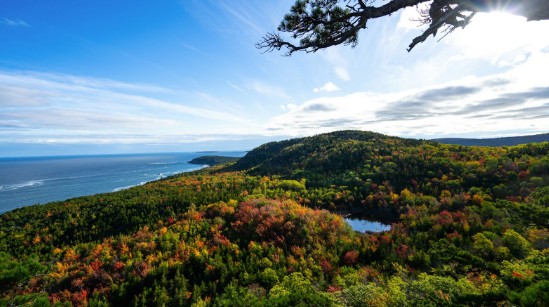
Photo by Wei Zeng on Unsplash.
Acadia National Park, Maine
There’s just something about Acadia in the fall, and unfortunately many people know it. It smells of wood, smoke, and salt, and maybe that coastal mountain air is one of the reasons campgrounds like Blackwoods and Seawall fill up quickly this time of year. But if you plan ahead and are successful in snagging one of these sites, you’ll wake up to both the sounds of ocean waves and a vibrant yellow forest. You truly can’t miss on any of the trails here, but after your hike, be sure to grab warm popovers at Jordan Pond House.
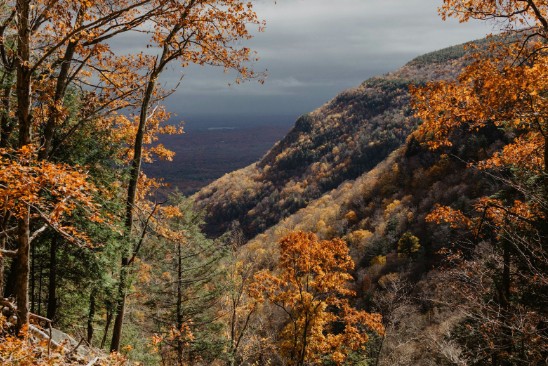
Photo by Moriah Wolfe on Unsplash.
Catskill Forest Preserve, New York
The Catskills don’t get as much hype as Vermont or New Hampshire, but if you’re a long-time New Yorker, you know they deliver when it comes to fall colors. You’ll find dispersed sites off Route 28 or near the Ashokan Reservoir; you won’t need a permit, but you will need to do some scouting to find a good spot. Hike to Kaaterskill Falls or take a look at the ridgeline from Overlook Mountain. Then grab apple cider donuts at a roadside farmstand on your way back (they are a staple throughout the region). Temps drop at night though (especially up high), so be sure to haul in your cold weather camping gear.
West Coast Camping Destinations
Fall on the West Coast is all about contrast. The mountain regions (and even select lower elevations) boast all the fall hues and crisp air you’ll find in other parts of the country. But in many parts along the west coast, there’s a bit of a risk: wildfire closures. Plus, there’s a ton of fast-filling campsites near national parks. If you can snag a site though, the west coast is still one of the best places to catch those fall colors.

Photo by Moriah Wolfe on Unsplash.
Lassen Volcanic National Park, California
Lassen flies under the radar, and that’s exactly why we love it. The Manzanita Lake Campground stays open into mid-October. Wake up to still water reflecting fiery leaves, and head out to hike Bumpass Hell—yes, that’s its actual name—or tackle the steep route to Lassen Peak. Fall colors line the aspen groves, and campers here are low-key. The vibe is peaceful—minimal cell service, no buses of tourists, and tons of open space.
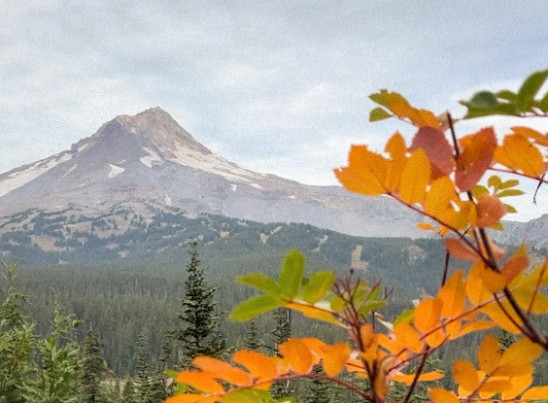
Photo by Amanda Capritto
Mount Hood National Forest, Oregon
If you want drizzly morning weather and moss-covered trails, Mt. Hood is it. Dispersed camping in Mount Hood National Forest is as good as it gets. Pull off Lolo Pass Road or follow FS-1825 toward the Salmon River. Hike to Tamanawas Falls or loop Lost Lake for a mirror image of Mount Hood. Pack your rainfly and an extra pair of socks in case the Oregon weather gets your shoes a little too wet to bear.
Mountain West Camping Destinations
Fall here is aspen groves turning gold beneath snow capped mountain peaks—one of the most stunning fall contrasts in the country. But weather can change quite fast at these elevations. And campsites may close if winter makes an early appearance. Pack plenty of cold-weather gear, because even if the day starts out sunny, it may not end that way.
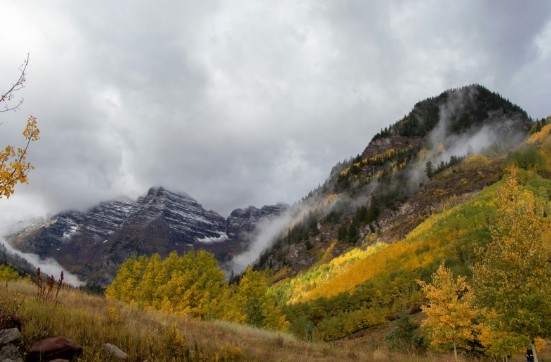
Photo by Matthew TenBruggencate on Unsplash.
Maroon Bells-Snowmass Wilderness, Colorado
We’ve all likely seen a photo of Maroon Bells-Snowmass Wilderness. It is iconic Colorado, after all. Aspen trees glow yellow near the picturesque glass lake and jagged peaks. Camp at Silver Bell or Silver Bar if it’s not too crowded—but those spots go fast. Hike Crater Lake trail for the best views, or head to Buckskin Pass for a longer trek. By mid-October, cars won’t be allowed on the access roads, so you’ll need to hike or bike in. It’s cold and quiet by this point in time, but it’s still one of the best fall camping destinations in the U.S., as long as you go early in the season.

Photo by Amanda Capritto.
Mackay Reservoir/Lost River Range, Idaho
If you’re seeking solitude, you’re in the right place. Mackay Reservoir is right at the bottom of Idaho’s tallest mountains, with BLM and national forest land surrounding. Dispersed camping here means waking up to silence. You can go fishing, take up paddleboarding, or just sit and watch the light hit Mount Borah. Nights will already be dipping below freezing come late October, but the stargazing is unmatched. Idaho may not be your first thought for fall adventures, but take our editor’s picture as evidence you should see it for yourself.
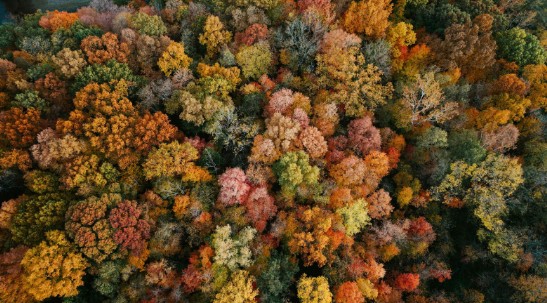
Photo by Temo Morales on Unsplash.
Turkey Run State Park, Indiana
Turkey Run brings some of the Midwest’s most dramatic fall scenery. Right along Sugar Creek, this park is packed with sandstone, suspension bridges, and trails through narrow canyons covered in gold leaves. Campgrounds are spacious, packed with trees, and remain open through peak foliage in October. There’s a lodge nearby if you want to opt out of the chilly nights, but most people come here to hike, sit by the fire, and just slow down.
Southeast Camping Destinations
Okay, we know the southeast isn’t known for their seasons, but fall does sneak in. The trees change slower, but that means longer camping windows! While you won’t find fiery maple groves, you will find springs, wildlife, and warm afternoons with a final taste of summer.
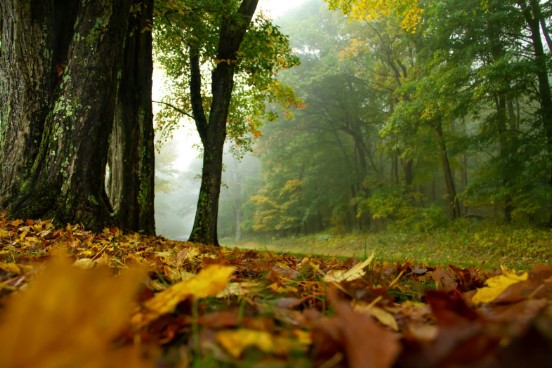
Photo by Becky Winner on Unsplash.
Shenandoah National Park, Virginia
Skyline Drive alone makes Shenandoah worth it. Big Meadows Campground is open through October and stays surprisingly available compared to other popular parks like Acadia. The trail to Hawksbill Summit offers sweeping views, and if you catch it at golden hour, be sure to bring your camera. You’ll need a bear-safe cooler to store your food for the trip though.
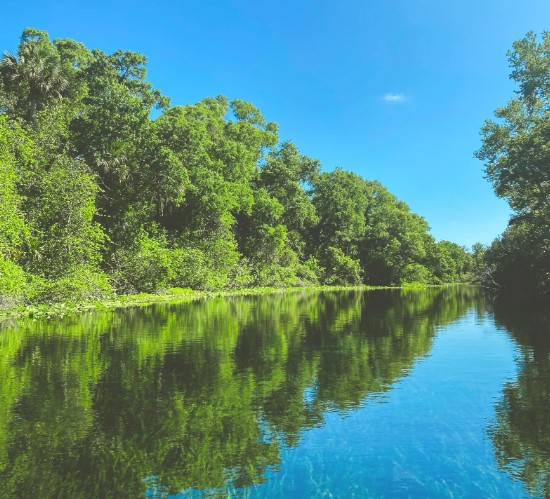
Photo by Amanda Capritto.
Ocala National Forest, Florida
You won’t find fall colors on the leaves here, but you will find springs—Alexander, Juniper, Salt, Rainbow, and more. The water stays around 72°F all year, but don’t worry: The water actually feels colder in the summer due to the contrast with Florida’s swampy air. Camp under tall sand pines, paddle through tea-colored creeks, then sleep with the forest buzzing around you. Dispersed sites are easy to find off forest roads. Beware of the Florida black bear! (Yep, they have those there.)
FAQs
Where is the best place to camp in the fall?
It depends on your vibe. If you want color, Acadia or the Rockies. Quiet? Idaho. Still-warm water and peace? Central Florida. Fall camp sites are quite varied across the country, so it’s best to research the weather patterns of a given area before you go.
What states have the best fall foliage for camping?
If you’re looking for east coast classics, Maine, Vermont, and New York will all be covered in orange, red, and gold through November. Colorado and Wisconsin are also great for fall colors with fewer crowds. Virginia is a quiet option and boasts a huge perk—minimal snow risk.
Is fall a good time to go camping in the U.S.?
As of last year, shoulder-season camping (fall and spring) is up 21% since 2021, so it’s safe to say the consensus is a resounding yes. Fall brings more tolerable weather, fewer bugs, and leaf peeping you can only catch a few weeks out of the year.
Where can I RV camp on the East Coast in the fall?
Our favorites include Acadia, Shenandoah, or the Catskills. If you’re looking for warmth, head down to Ocala National Forest in Florida. RV spots for some of the best fall RV trips can get snatched up fast though, especially if you’re looking for sites with full hookups. Book early and call beforehand to verify size restrictions. It’s also worth noting that a lot of the east coast campgrounds close after Columbus Day due to weather, so aim for an early east coast fall RV trip.
More Essential Reading for Roadtrippers:
- These U.S. Towns Offer a Refreshing Break from Summer Heat
- Underrated Labor Day Road Trip Destinations From TravlFi’s Travel Experts
- Avoid Crowds, See Underrated Sights: Guide to a Grand Canyon Trip You’ll Never Forget
- A Must-Do Road Trip Itinerary for Military History Enthusiasts
Before you head out on your fall camping trip, read more about how TravlFi can help you stay connected, especially at more remote sites.

Article By: Lauren Keary
Lauren Keary’s passion for travel began during college when she sailed on Semester at Sea to 17 different countries. Since then, that number has grown to over 40. This passion for travel has also taken a foothold in her career, as she previously worked as a travel writer for BuzzFeed and the Evening Standard full-time, writing additional travel content for TripSavvy, Outside, and San Diego Magazine in her spare time. When she’s not writing about her adventures, you’ll probably catch her out on a hike with her dog Rusty, or looking for the best new coffee shop in town. But let’s be clear, she’s always going to be that friend in the friend group who’s catching flights (not feelings), so you’re much more likely to see her at 30,000 feet.
